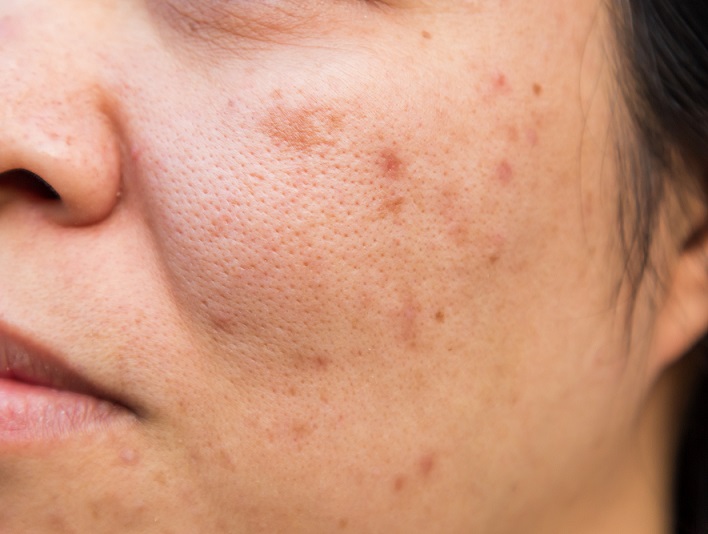We have spent the entire summer stressing the importance of using sunscreen to avoid spots and problems later on. Even so, it is possible that no matter how much you have protected yourself, in the end you have got some of those spots. Today, we are going to learn how to remove skin stains.
As we have explained on occasion, sunspots are caused by an excess of melanin in specific areas of our skin (usually in the face, neckline, hands …) and for many people it translates into an aesthetic problem.
The sun is one of the main causes of the appearance of spots but not only brings this problem, the radiation also causes premature aging, so, skins with spots look like “elderly person”.
Although the sun is not the only cause, it is the main one (they can also be caused by photosensitizing drugs, such as oral contraceptives, or by hormonal causes, such as pregnancy).
Since we know the cause, I will try to explain a little more about them.
Eliminating these spots is a slow and complicated task, we must keep in mind that they are a “chronic disease” once they come out you have to take care of them all your life because they never completely disappear, in the end it will be true that the skin has a memory…
If I always emphasize the importance of sun protection with a high and wide spectrum factor that covers UVA, UVB, infrared and if possible blue light, in the areas where we have spots, this importance is multiplied, since we must avoid the production of melanin in these areas as much as possible.
We must also use products with whitening and depigmenting agents, which stop the growth of the stain and attenuate it.
Some of these active ingredients are:
-
- Vitamin C: Antioxidant, decreases the number of free radicals in our skin. Prevents photo-aging and reduces dark spots by providing luminosity. It also attacks skin aging due to its anti-wrinkle action and prevents flaccidity.
-
- Astaxanthin: Very powerful antioxidant. It is the substance that algae have to protect themselves from ultraviolet radiation. Astaxanthin accumulates in our skin making it more resistant to sunburn and prevents and improves spots. It also prevents collagenases, which are enzymes that break down collagen, from acting, thus promoting firmness.
-
- Glycolic acid: It is a ????-hydroxy acid (AHA) that makes a chemical exfoliation. It removes stains and dead cells by making a cell renewal. It leaves the skin very bright. It is a very small molecule that penetrates the innermost layers of the skin and that is reflected in the outer layers. In the market we can find concentrations between 4 and 20% but to treat pigmentations the highest concentrations are used. It should be applied on alternate nights and normally without combination with any other product, as it is powerful enough by itself. Once applied we can feel itching, redness, stinging and may even peel the skin during the first days. It is extremely important to use sun protection while being treated with AHA’s and we should not use them in summer.
-
- Niacinamide: Reduces the activity of melanocytes (melanin precursor cells) so it is depigmenting. It also provides hydration, is anti-wrinkle, and improves the barrier function of the skin… We can find it in concentrations between 4 and 10% and we can adapt the concentration to the sensitivity of our skin.
-
- Kojic acid: Comes from a fungus. It inhibits the enzyme tyrosinase which is responsible for the production of melanin, so it is used in the removal of blemishes. It is also a great antioxidant that fights free radicals by slowing down skin aging.
-
- Retinoids: Stabilize melanocytes and reduce their activity. They act as a peeling, detaching the cells and accelerating their renewal. They can cause irritation so they must be introduced into the routine little by little in low concentrations and only 2 or 3 days a week, then we can increase the application to alternate days and if tolerated, can be used daily, even increasing the concentration. As with glycolic acid, they must be applied at night and it is very important to use sunscreen. They should also be avoided in summer.
These are a small list of some of the depigmentation actives that can help you to fight for spots. Remember that it is always important for a spot to be evaluated by a dermatologist and in many cases they need to be treated under a doctor’s prescription.
I think we should all reflect on our habits when facing the sun and not minimize the consequences it has. And you, have you noticed any new spots? Have you managed to depigment an old spot? Tell me in the comments if you have ever had spots and what treatment you used





